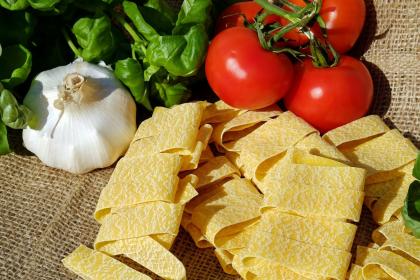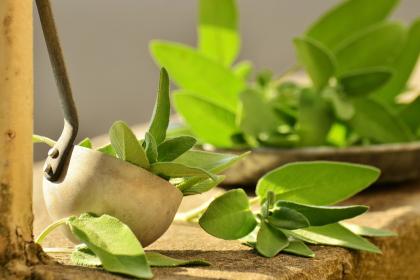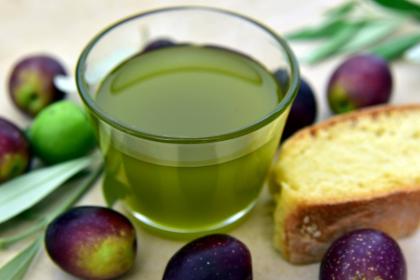
“Affari de cipolla e bieta”, “an onion and chard business” is an all-Roman way of saying to indicate a matter of little importance. However, the specific weight of garden vegetables in the cuisine of Rome, a traditionally poor, popular cuisine based on peasant-derived ingredients, is far from irrelevant. Quite the contrary. The vegetables that grow in the rich and fertile Roman countryside have inspired numerous recipes and given rise to culinary delights. These excellent products are anchored in the tradition of the area and are therefore often marked with the adjective “Romanesco” or “Roman”.
Carciofo romanesco - The Romanesco artichoke
Rounder, bigger and tenderer than other cultivars, free of spines and with eye-catching green/purple-tinted globes. Known locally as “mammola” or “cimarolo”, the Romanesco artichoke fears no comparison; not for a coincidence, it was the first vegetable in Italy that has obtained the European Union Protected Geographical Indication mark. The undisputed protagonist of the local markets between January and May (although the best season is between March and April), it has recognized therapeutic properties (antioxidant, detoxifying, depurative...) and a long tradition behind it. In Latium, it is said to have been cultivated since Etruscan times, as shown by the depictions of its leaves on the tombs of the necropolis of Tarquinia. The unique taste of Roman artichokes is at its best in all the traditional Roman recipes where they have a place of honor. Stuffed with minced mentuccia (a wild Roman mint) and garlic, set “upside down” in a pot and cooked gently, “Carciofi alla romana” (Roman-style artichokes) give off scents that are hard to forget. Braised in oil and wine with baby peas, fresh broad beans and lettuce, they are the headline act in a quintessentially Roman spring vegetable stew, the famous “Roman vignarola”. Plunged head first into bubbling hot olive oil until they look like blooming flowers, “Carciofi alla giudia” (Jewish-style artichokes) are an icon of the Jewish-Roman cuisine born in Rome’s ancient ghetto. Crispy and golden, after being passed in a batter of eggs and flour and then pan-fried, they are finally the perfect accompaniment to the lamb, or “Abbacchio” that is a Roman Easter staple.
Zucchina romanesca - Roman zucchini
The summer sun gives them a unique depth of flavor: typical of the late spring and summer season, but available in food markets until November, the Roman zucchini is distinguished from the larger dark green zucchini grown in the rest of the Italian Peninsula by its light color, star shape and striations. Also contributing to its unmistakability, of course, is the delicate flower attached to the top. With its hues in shades of yellow and orange, the zucchini blossom (Fiore di zucca) is the perfect example of how Roman cuisine is able to transform simple ingredients into works of art: stuffed with anchovies and mozzarella, then battered and fried, it is a gratification for the palate and the spirit. Flowers aside, Roman zucchini are among the most beloved vegetables in the kitchen, thanks in part to their unparalleled versatility. The tasting possibilities multiply almost endlessly: sautéed and used to season a pasta or in a creamy omelet, grilled or au gratin, stuffed with ground meat and cooked in tomato sauce... Combined with Roman mentuccia and vinegar, they are the stars of one of the specialties of Jewish-Roman cuisine: “Concia di zucchine”. Fried and arranged in layers in a baking dish, seasoned with minced mentuccia and drizzled with white wine vinegar, they are left to rest overnight in the refrigerator before being served: a simple yet perfect side dish.
Lattuga romana - Romaine lettuce
With its compact head sporting a rich, dark green color on the outside and its long, crisp, sweet-tasting leaves, romaine lettuce quickly makes its mark among market stalls. Hardy and easy to grow, it is now one of the best-known and most popular lettuce varieties around the world – including in the United States where it is the basis of the rich Caesar Salad – but its origins are lost in time. It was certainly already popular in ancient Rome: authors such as Pliny the Elder and Columella speak of its properties and its use in salads and soups, and it is said that Roman legionaries took its seeds with them to plant it around their camps. It is precisely to ancient Rome that lettuce owes its name, after all: “lactuca”, meaning “rich in milk”, for the milky liquid contained in the stems and roots. A milk to which folk medicine attributed great powers and which actually has analgesic, sedative and soothing properties. Low in calories but rich in minerals and vitamins, romaine lettuce is the queen of salads but is also delicious if cooked, for example in savory pies and risottos. Roman tradition combines it with artichokes, broad beans and peas (blended perhaps with a little white wine) in the recipe for Roman vignarola, a concentrate of spring garden gifts born in the Castelli Romani area. With pecorino romano cheese, it is then the unexpected ingredient of an ancient dish to be rediscovered, “frittata alla burina” (peasant-style omelet).
Broccolo romanesco - Romanesco broccoli
Green and spiky, with that interplay of geometries that gives it an almost hypnotic appeal, Romanesco broccoli is the king of the winter season, even though its harvesting period extends into May, and it has been cultivated for centuries in the Roman countryside. Beautiful to look at, but above all good and healthy to eat: low in calories but rich in properties, it was known and loved from the earliest times. The ancient Romans also used its juice for a variety of therapeutic uses (as an anti-anemic, diuretic, healing, vermifuge, antihistamine...), and ate it raw, before banquets, to help the body better absorb alcohol. With their unmistakable taste, Romanesco broccoli do not require elaborate preparations: they are perfect boiled and sautéed in a pan with guanciale and pecorino cheese, sautéed with vinegar and white wine, or crispy and golden in the great “fritto misto” (fried seasonal vegetables, accompanied by chunks of salt cod and the ubiquitous sliced apples) served on Roman tables on Christmas Eve. A dip into the past of Roman gastronomic culture is then the soup with remnants of pasta and broccoli cooked in the broth of arzilla (the Roman name for the skate), a dish traditionally reserved for Christmas Eve, lean days and Lent. The XL version of Romanesco broccoli is the prized Capoccione broccoli. “Capoccione” means with a large head: a name derived from the size of these broccoli, grown only in the small town of Albano Laziale.
Finocchio Romanesco and carote di Maccarese - Roman fennel and Maccarese carrots
Round and large, with crisp, snow-white leaves and a flavor reminiscent of aniseed: sweet and aromatic, Roman fennel covers about 10 percent of Italy’s fennel production and is present on food market stalls for much of the year, with the exception of the hottest summer months. Its history dates back to ancient times, evidenced by its mention in Egyptian papyri and Greek mythology: rich in fiber, vitamins and minerals, it was known and appreciated as much for its flavor as for its healing properties, for example to improve eyesight and physical fitness, and it is said that Roman gladiators consumed it to increase vigor and courage. With its intense aroma, Roman fennel is perfect both raw and cooked, baked, sautéed or stewed. Dipped in a raw sauce with extra virgin olive oil, salt and pepper, they are then de rigueur in a recipe of disarming simplicity and irreverent name, mentioned even in the sonnets of Giuseppe Gioachino Belli and Trilussa: the supposedly aphrodisiac “cazzimperio”, the Roman version of the Italian vegetable pinzimonio. The historical recipe calls for only fennel and celery, but the color palette of crudités can be expanded by adding, for example, peppers, cucumbers and radishes. Or perhaps carrots from Maccarese, a small town near Fiumicino: with their strong flavor and lingering aroma, they are another excellence of the area, also used for soups and gourmet dishes.
Die Wege der kulinarischen Genüsse

Volkstradition

Gewürze und Kräuter in der Römischen Küche

DIE WÜRZE DER RÖMISCHEN KÜCHE: SCHMALZ, SPECK, GUANCIALE (DURCHWACHSENER SPECK) UND OLIVENÖL












































